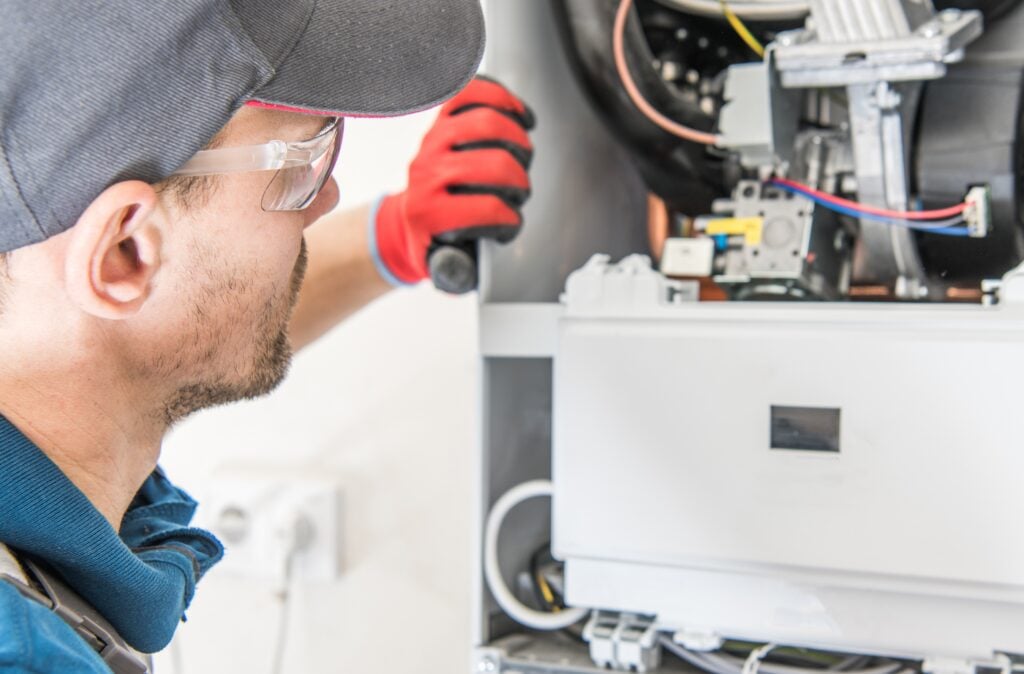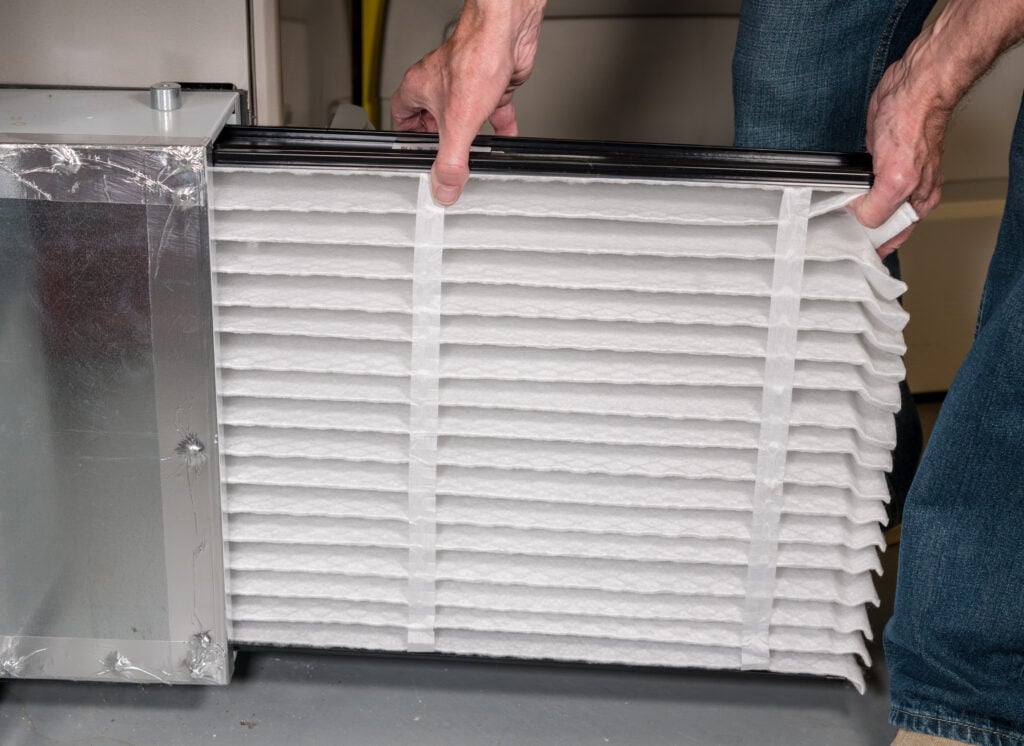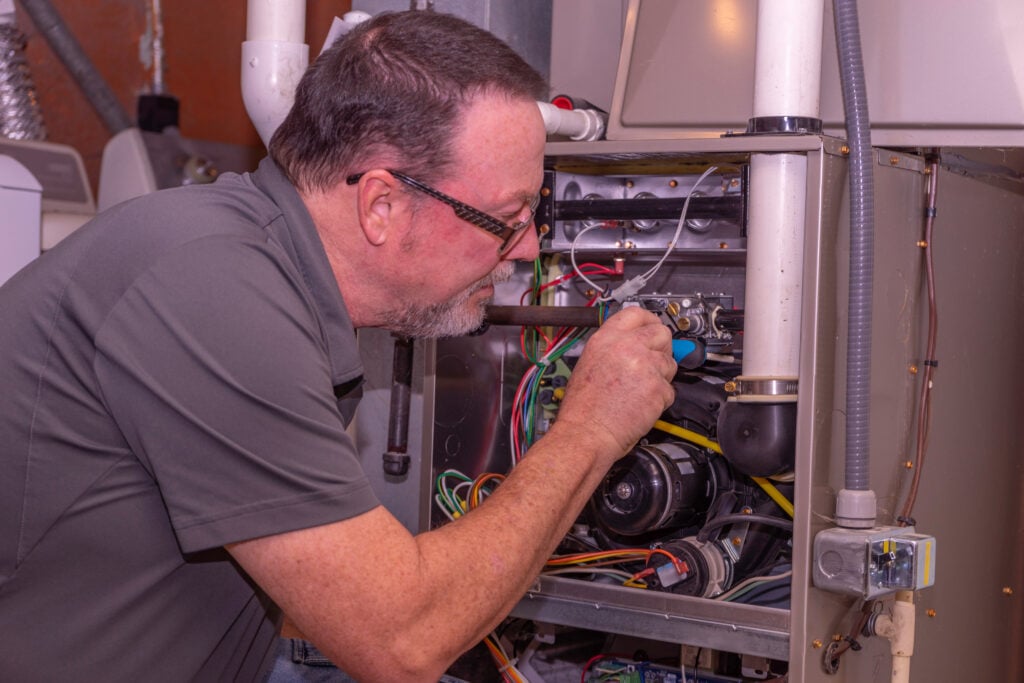9 Tips For Emergency Furnace Repair
When the temperature drops and your furnace suddenly stops working, panic sets in quickly. No one wants to face a freezing night without heat. That’s where knowing the basics of emergency furnace repair can make all the difference. While some issues require a professional technician, there are a number of steps homeowners can take to troubleshoot safely and restore heat faster. If you’d rather skip the guesswork, you can always schedule furnace repair service with trained experts who can diagnose and fix the issue promptly.
In this guide, we’ll share practical tips, common causes of furnace breakdowns, and when it’s time to call for professional help.
Here’s what you’ll learn:
- Why emergency furnace repair matters for safety and comfort
- 9 troubleshooting steps to try before calling for service
- FAQs about furnaces, breakdowns, and quick fixes
- Tips to prevent future emergencies and keep your system reliable
❄️ Why Emergency Furnace Repair Matters

When your furnace quits unexpectedly, it’s more than a comfort issue—it can become a serious safety concern. Being proactive about repairs ensures your system stays dependable when you need it most.
Here are the top reasons emergency furnace repair is important:
- Protecting your family’s health: Cold indoor temperatures can be dangerous, especially for children, seniors, and those with health conditions.
- Preventing property damage: Frozen pipes are a real risk when your furnace fails in freezing weather.
- Avoiding higher costs: Addressing small issues immediately prevents them from snowballing into major, expensive repairs.
- Restoring comfort quickly: Knowing what steps to take gets your home warm again without unnecessary delays.
🔧 9 Tips For Emergency Furnace Repair
Before calling for professional help, try these nine steps. Many issues are simple fixes you can handle yourself.
1. Check the thermostat
A misconfigured thermostat is one of the most common reasons a furnace won’t start.
- Ensure it’s set to “heat” and the temperature is above current room level
- Replace batteries if the screen is blank or dim
- Confirm the thermostat is properly connected and not in “fan only” mode
2. Inspect the power supply
If your furnace doesn’t turn on at all, check the breaker panel.
- Reset any tripped breakers once
- Verify the furnace’s power switch is flipped on
- Avoid repeated resets, which could signal electrical issues requiring a pro
3. Check the air filter

Clogged filters restrict airflow, which can cause the furnace to overheat and shut down.
- Replace filters every 1–3 months
- Use the right size and rating for your system
- If unsure, start fresh with a clean filter to eliminate this variable
4. Look for error codes
Modern furnaces often have a small LED indicator light. Blinking patterns correspond to error codes.
- Check your furnace manual for the code meanings
- Error codes can point to issues with ignition, airflow, or sensors
5. Inspect the pilot light or ignitor
Older furnaces use a pilot light, while newer ones rely on electronic ignitors.
- For pilot lights: If out, relight according to manufacturer instructions
- For ignitors: Check for visible cracks or damage—replacement may be necessary
6. Examine vents and registers
Blocked vents limit airflow and make the system seem broken when it’s actually restricted.
- Ensure vents are open and unobstructed by furniture or rugs
- Check outside exhaust vents for ice, snow, or debris buildup
7. Reset the furnace
Many furnaces have a reset button. Press it once and wait.
- If it restarts and works normally, you may be in the clear
- If it keeps tripping, shut the furnace off and call for service
8. Listen for unusual sounds
Strange noises often indicate what’s wrong:
- Clicking: Ignitor issues
- Squealing: Worn belts or bearings
- Banging: Dirty burners or delayed ignition
- Grinding: Motor or blower failure
9. Call for professional help if problems persist
If you’ve tried the basics and the furnace still won’t cooperate, it’s time to bring in a pro. Emergency repair services are available to restore heat quickly and safely. For detailed troubleshooting and repair tips on all these common issues, review our guide on common heater problems and simple fixes.
👉 Emergency Furnace FAQs
When the heat goes out, homeowners have plenty of questions. Here are some of the most common ones answered clearly.
- How do I know if it’s safe to try restarting my furnace?
If you don’t smell gas or notice burning odors, restarting is generally safe. But if unusual smells are present, shut off the system and call for help. - Can I run space heaters until my furnace is fixed?
Yes, but use them cautiously. Keep heaters away from flammable objects and never leave them unattended. - Why does my furnace keep shutting off?
Possible reasons include dirty filters, overheating, a faulty thermostat, or airflow blockages. For a complete understanding of these failures and their technical solutions, read our analysis of why gas furnaces might malfunction during winter. - How fast can a technician usually arrive for emergency repair?
Many HVAC companies offer same-day or next-day service, especially during peak heating season. - What if my furnace fails in the middle of the night?
Call for 24/7 emergency service if available. In the meantime, use blankets, safe space heaters, and block drafts until help arrives.
🧯 Preventing Furnace Emergencies

The best way to handle an emergency is to avoid one altogether. Here are practical steps to keep your furnace dependable:
Schedule annual maintenance
A yearly inspection ensures your furnace is clean, safe, and efficient. Technicians catch small issues before they turn into emergencies.
Replace filters consistently
Dirty filters are the #1 preventable cause of furnace breakdowns. Mark your calendar to check every 30–60 days.
Monitor warning signs
- Rising energy bills without explanation
- Odd noises or odors when the system runs
- Frequent cycling on and off
- Rooms that never reach the set temperature
Know cost expectations
- Minor fixes (filters, sensors): $50–$200
- Moderate repairs (ignitor, thermostat): $150–$500
- Major repairs (heat exchanger, blower motor): $800+
DIY vs. Professional Repair
| Task | DIY Possible | Pro Required |
| Thermostat battery replacement | ✅ | |
| Filter replacement | ✅ | |
| Resetting furnace | ✅ | |
| Ignitor replacement | ✅ | |
| Electrical repair | ✅ | |
| Heat exchanger repair | ✅ |
🔥 Stay Warm With Fast Furnace Repair
A furnace breakdown is stressful, but knowing the basics of emergency furnace repair gives you confidence to act quickly. From checking filters and thermostats to resetting the system, these steps often restore heat without delay. But if problems persist, professional help is the fastest and safest solution.
Don’t let a sudden breakdown leave your family in the cold. If you need reliable service and peace of mind, contact us today to schedule emergency furnace repair and keep your home safe and warm all winter long.
